Your story (biography) in 10, or more, lines each, with a peculiar hint on your formative age and childhood. Please do gift us also the moment in which you met!
We were both born and raised in the 1960’s in Hamburg, Germany.
Lili Nalŏvi:
I grew up with two brothers in an old mansion in a very green district of Hamburg.
My mother was a social worker and my father a lawyer, he left the family when I was ten.
From the very beginning I had a passion for creating spaces and little dolls out of nothing, using shoe boxes, little branches and cotton wool. I used to draw and paint in watercolors a lot. My mother told me that already as a little girl I wanted to become an artist. I started setting up little exhibitions at a very young age. I loved role-playing and I had a passion for creating costumes. At the age of seven I started to create my own dresses, first by knitting, crocheting and embroidery and at the age of fifteen I used my grandmother’s sewing machine to create my own fashion out of discarded clothes which I found at the flea market. I was fascinated by all sorts of artisan techniques like pottery, spinning, weaving and later I tried to work with plaster, bronze, gilding and so on. I was constantly on the go; I was never bored, there was always something in my mind to create.
I started my art studies in Northern France under the tutelage of a French sculptor, and soon afterwards I was trained as a carpenter in Northern Germany before I began studying at the Art School HFBK in Hamburg, Germany.
Jesko Willert:
I grew up with a younger sister in an old mansion in a labour district of Hamburg.
My mother was a teacher and my father a tax consultant.
My parents loved travelling so already as a small boy I was travelling a lot with my family to Scandinavia, Italy, France, England and many other places by car.
We had a holiday apartment at the Baltic Sea so I spent a lot of my childhood and youth playing and enjoying rough nature. I started to sail at the age of five and I always loved to contemplate water, observing seabirds; endless summers I lingered along the shore of the Baltic sea, spending my days outside in nature, playing with drift wood and stones. Of course I loved drawing and painting in watercolors.
I started my art studies at the Graphic Design School and a private Art School in Hamburg before attending me too HFBK.
Both of us are survivors of traumatic childhood/youth experiences.
(Lili was abused as a child and as a very young woman she got raped. When Jesko was eighteen he lost his 15 year-old sister and his 41 year-old father in a fire and he nearly lost his own life when his father burnt down the family house).
So for both of us it was a very long process to overcome and to transform negativity into positivity. Although one will never overcome those traumatic experiences completely, you can learn to live your life more in peace and freedom, and love for sure is a very precious gift and the most powerful support along the path of life.
We fell in love right away when we met dancing at the famous dance club Soul Kitchen in Hamburg in 1990, when we were both studying art. We have lived and worked together ever since. Over the years our ambition increasingly became to build up and not to destroy. Our symbol is a rose with a little rosebud; to get something blossoming is our deepest wish.
During the years 1991 to 1998 the campaign against sexual violence and child sex abuse formed the focal point of Lili’s works. For this purpose, I worked almost exclusively in the sphere of object art. My works ranged from small objects right up to room-filling installations. In 1996 I was awarded 1st Prize for the works „Silent Night, Holy Night“ and „Circumstantial Case 1 – 45“ in the European Competition for Contemporary Art, Salon de Printemps, Letzeburger Artisten Centers in Luxemburg.
From 1990 to 1998 Jesko worked in the fields of informal drawing, painting, installation and sculpture. I incorporated dreams, stories, everyday events, emotions and my thoughts on paper into these works: Masks, mythical creatures and the themes “ house” and” boat” feature regularly in my informal work. The painted screens are mostly a mix of canvas, leather, beaten metal, drawings, etching pads and linocuts.
Between 1998 and 2000 we went to Florence, Italy, to learn ancient Italian painting techniques with the painter and wonderful teacher Stefano Ficalbi. To this day a very warm-hearted friendship still connects us! We spent two and half wonderful years living close to Piazza Santo Spirito where you can find all the famous artisan studios.
Since that time we have regularly rented long-term apartments in different parts of Italy and converted them into an art studio, like in Sicily on the Aeolian island Salina.
Childhood – better to say the citizenship of tomorrow – is a constant focus on your work. Many artists dress the code of the ‘help’, but you work with schools having the unpaired aim to disappear as characters and to serve as medium. Toward self-consciousness?
In 2011 we transformed a part of a former hospital into an exhibition space. The 100 year-old building, which had been abandoned for 6 years, had no electricity and no running water. Using an area of 800 square metres, we created an installation featuring our paintings, sculptures, objects, wall-hangings, videos etc.
This exhibition was the reason we were invited in 2012 as artist in residence for three months to the Kenian island, Lamu, by the generous couple Lena Bardenhewer and Herbert Menzer. Jesko had the idea of organizing a communal painting activity in Lamu long before getting there. After arriving and consulting with locals, the Shela Schoolyard Canvases project was born: free-style painting sessions with children of the Islamic Primary School in Shela was to take place every Thursday at 4pm for the duration of our stay. Without guidelines nor theme, just letting the fantasy of the children naturally flow, we waited with curiosity for what would show up. Purposely we used only local materials, to show the children there is nothing missing to start, they have already everything around them because we recognized the bad habit of “dependence” that the white man is causing. Lengths of sailcloth were sewn together to make huge canvases measuring 10 by 1.6 metres. A frame to hold these was constructed from mangrove poles. Charcoal, used for cooking, served for drawing. As for paint, we made simple egg tempera with local pigments.
Word of this outdoor painting project with the school children spread all over the island. Thus, we were then asked to do two sessions with the children of Anidan Orphanage in Lamu town. The Anidan orphanage takes care of, and educates, about two hundred children, half of whom live in a shelter on site. Many of the children were physically or sexually abused before they came to the orphanage. The Anidan orphans immediately started to paint themselves and applied paint over their foreheads and cheeks, unconsciously echoing the ceremonial practices of their tribal ancestors.
Painting is a bridge for everyone: the children, the teachers, for us – and sometimes even beyond. We all cross and meet somewhere else through this process. We think it’s important for the children to realize that learning can also be like this – fun! free! – not just technical, not just language-based. Giving children that insight is the most precious gift. It’s just a moment, but it’s a moment that can change a life.
And at the end of the project a bunch of children took off on a dhow with a sail made from one of their huge canvasses. Over the Lamu channel they cruised, with their paintings flapping brightly above them: images of cars, helicopters, stars and hearts flying through the air, like dreams thrown to the wind.
Then, In 2013, we joined a team of doctors travelling with Professor Dr. Kreusch to their annual, free project of cleft-lip and palate surgery at the Padhar Mission Hospital in Madya Pradesh in central India, where they not only support the hospital but also three schools in the village.
A special challenge for us was the fact that a lot of the children at the Padhar Mission School are mute, deaf, blind or otherwise physically disabled. Our satisfaction was beyond words when we saw how enthusiastic all of them were, without exception they all participated in the project. It was beautiful to see how they helped each other, for example partially sighted children helped blind children and painted together, three-handed, or mute children formed little groups and discussed enthusiastically in sign language what subject they wanted to paint together.
What we experienced was that it is a beautiful inspirational interaction when up to 100 children paint at the same time on these huge open-air canvases. Girls and boys were both equally creative and active, handicapped and non-handicapped children painted together. This is very helpful for the prevention of violence, it brings the group together and supports team spirit and encourages self-confidence and sustains creativity. In only one week we painted large canvases measuring 200 metres by 1.8 metres with them. At the end some of the canvases were displayed on the hospital grounds to make it more joyful and colourful.
Picturing, recalling and repurposeing: in one word you seem creating worlds from disused or overlooked items, extending this touch to buildings and entire atmospheres: you are engaged to work as custodians of the most antique applied arts techniques to create immersive interiors and piece of arts where one can feel a better being. What is your approach to the market of art given the high spirituality and immateriality founding you both?
In 2003, by turning our exhibitions into environments, we also started focusing on the mood of the space or room, the vibration of the entire building which had to be transformed. In so doing, the surroundings themselves become part of the art. The room becomes an integral part of the work of art. Working mainly with abandoned houses, buildings like in 2005, a 200 year old Villa which had been for 50 years a town-hall full of bureaucracy or in 2011 a former hospital which had been abandoned for 6 years with numerous traces of vandalism inside. Our intent and focus has been always to transform negative vibrations into positive or from dark to the light.
In all our works, we try to create a highly atmospheric “Gesamtkunstwerk” in which we transform spaces, recycle lovingly chosen objects and intricately and imaginatively process materials. An integral part of the installations always include our sensitive portraits and contemplative water landscapes. These spaces invite the visitor to linger and contemplate; we try to create spaces that grant an existential perception of life and intense sensuality thus enabling the visitor to partake in the external and internal journeys undertaken by us through space, time and existence.
Working successfully, completely independent from THE art market for the past 26 years, we finance and organize all our projects on our own from the cash flow generated from selling our art.
For many years we had no art studio per say, only using our basement apartment as our art studio; in this way we saved a lot of money which we could reinvest into our art projects, exhibition and month-long travels.
But you wouldn’t expect a basement apartment to be so magical: the old glass panels and glass doors capture the moods of the mystical light and the large wooden floorboards and the stucco reliefs which decorate the ceiling of the rooms. In front we have a little rose garden where we planted a Magnolia tree and on the backside we have a small mediterranean courtyard with plants, terracotta flowerpots and Italian garden furniture. It gives you the feeling of living in the countryside.
Only in 2008 we extended our art space by taking half of the apartment above the basement, the Bel Étage. The Opening of the Bel Étage was celebrated with a fantastic fancy dress party. Since 2015, we further extended our Bel Étage art space by taking the back part of the apartment, so now we work and exhibit in 230 sqm, the ultimate spaciousness! Both basement and Bel Étage have appeared in numerous international magazines.
Apart from our exhibitions in the disused off-locations, we extend invitations on a regular basis to our ART TEA SHOP in the Bel Étage art space where visitors can linger in our current exhibition with a cup of Green Rosebud Tea. Here,they can immerse themselves in this constantly-changing synthesis of the arts atmosphere. Inspired by our travels to Burma and the tea shops where green tea is always offered for free, we started to integrate our first ART TEA SHOP in 2005 into our exhibitions.
The beautiful thing about our visitors and about our collectors is, they have no specific age, no specific class, no specific nationality. We seem to attract a wide range of people who seem to be enthusiastic about our work. And as we sell our paintings directly to our collectors, we know each of them personally and a lot of them have become friends. There are entire families in which up to three generations are collecting our art.
One story was extremely touching, thinking of it now we are still getting goose bumps: the only fourteen year old daughter of collectors – she was accompanying her parents to our exhibitions since she has been 4 years old – had only one wish for her confirmation: a painting of ours. So one day she came by and bought herself a portrait of a young Kenian girl. Several months later her grandmother and her aunt accompanied her to one of our exhibitions and started to become collectors themselves.
Another wonderful story is the following: Once there was a young couple visiting our art studio after they have read about us in a magazine. The young man wanted to temporarily rent some paintings for his office. But as he shared his office with his 70 year-old mother, he kindly asked us for some photographs of our paintings to present his idea to his mother. His mother was shocked because the paintings depicted dark-skinned Cubans and he realized for the first time in his life, his mother’s resentments. After a while he was able to convince her to give it a try and several life-size portraits of dark-skinned Cubans were displayed for one year in their office. A fantastic change happened at the end of the year when we wanted to retrieve our paintings. His mother told us: “You cannot take away my paintings, I speak with them every day!” She then decided to buy them all.
For us this is the most beautiful compliment – when our paintings achieve such an opening of the heart and mind for the contemplator.
How much are you conscious to be a poet of the unknown and how do you dwell in this?
We are travelling artists. Our travel paintings almost exclusively feature impressions of our numerous trips to Africa, Latin America, Asia and Europe. Our art is the result of a leisurely journey without a specific goal or destination, a journey through special moments and chance encounters, through impressions and feelings. Our trip is more of an internal journey of discovery than an external one. The adventure and experiences of the journey are then condensed into a painting.
Our motto during our month-long travels is “spend time, save time”. We are slow travellers, in order to allow unknown, surprisingly encounters and moments to just happen, to allow for serendipity. We are without destination, without purpose, without plans and without a pre-determined route. Without a planned end and endless. We partake in voyages of discovery. A dive into the deep unknown, allowing the impact to sink in; an exploration of a country by surrendering oneself to it.
In 2004 when we travelled to Burma/Myanmar for the first time, we stayed in Bagan for a week and attended the famous Ananda Pagoda Festival. Villagers from around Bagan came to the festival in traditional bullock carts and made camps for the whole duration of the festival. We lingered around the tea shops and improvised stores which selling everything from foodstuff to agricultural implements. Many famous local theatrical troupes had come also to provide entertainment for the festival-goers. After a while we discovered a tent-ed photo studio of a Burmese extended family. Normally only locals asked to be photographed. On display were all sorts of costumes and different painted backgrounds. With our passion for costumes, we loved the idea of taking a photo. We were immediately surrounded by a group of laughing assistants and once we tried the various costumes on we decided to dress up as Burmese dancers. The boss of the company was a warm-hearted, energetic lady she started to bring us in particular positions for the photographer, placing our hands as on puppets. She was so satisfied with the result as we were passionately following her instructions. We had so much fun with all of them that we kept on taking photos in different classical Burmese dancing positions and couldn’t resist coming back the following days to try on other outfits.
In 2001 we travelled 3000 km around Rajasthan, India, from one Maharaja’s Palace to another in an old Ambassador limousine with violet curtains, so romantic. Our Indian driver could neither speak English nor could he read Hindi and he had never done the tour before. So this became a true adventure because at every junction we had to look for an English speaking person to ask for directions and to please tell it to the driver in Hindi. Of course we could have changed drivers, but the risk is, if the driver speaks English too well he only has his own business in mind and takes you to shops which you don’t want to go to. Like this we had a trip full of surprising encounters.
In 2006 we did a three month trip through Vietnam, Cambodia, Laos, Thailand and Burma. When we arrived in the North of Laos at Luang Namtha we decided to proceed to North Thailand not via bus but by taking a two day boat trip on the river Nam Tha in an open, wooden longboat. Usually if we have the choice we always prefer to take a boat to satisfy Jesko’s passion for boats. There were no seats so we sat directly on the planks, gliding along the mystical Nam Tha River, floating in between walls of intense green, enjoying the concert of the rainforest’s changing rhythm at each smooth turn of the river, sliding through the impressive natural scenery overlooking the earth-coloured waters of this majestic tributary of the Mekong with tiny tribal villages nestled on it’s banks. Overnight we stayed in the traditional boatmen’s village of Ban Khone Kham, in the simple stilt house of the boatmen’s family. After having a nice meal with them, Jesko asked if there would be any opportunity to recharge his video camera, expecting it wouldn’t be possible. But contrary to our assumption, the boatmen pointed at two simple cables hanging loose from the ceiling, we were explained that the electricity was made by a bicycle dynamo installed at the riverside – absolutely fantastic! Time and again we are impressed and inspired while travelling through various countries where people have to improvise because it is impossible to acquire anything new, perfect or highly tech. So often you find upcycled objects in our environments and discover signs of our passion for improvisation.
Which encounters do you normally have in your daily work routine?
Although we have a 24-hour, 365 days a year relationship, there isn’t so much routine in our daily work as the variety of activities change a lot.
We even share so many passions and interests that some people say we are symbiotic, but we don’t care.
At some point we may have an exchange about a new dress we want to create by upcycling vintage clothes, like a discarded leather jacket which Jesko is giving a new surface by gilding the jacket with gold leaf. The next moment we might talk about a painting, discussing the colours, how to proceed or when is the right moment to complete a painting, since four eyes see more than two.
We even paint some paintings and big wall hangings together, but not simultaneously. One of us starts and hands it over to the other one at some point; this is how we have a constant exchange until it is completed. A lot of people wonder how we can stand each other working on the same painting, as they would only end up fighting. We have made the wonderful experience that a painting often improves in this manner and our Italian teacher encouraged us to work on paintings together to combine our skills. Together we create something that neither one of us could create alone and that’s such a beautiful experience.
At the end of the day or even in between you can find us dancing a Tango together or shaking the hips to a piece of James Brown.
Which is the most important achievement after you started to work as artistic duo? And as human beings, two of the millions of people from this world?
Concerning our artistic career, for sure the most important achievement is our participation in the exhibition “Personal Structures – Crossing Borders” at the European Cultural Centre, Palazzo Bembo during the 56th Biennale di Venezia 2015. With in this context, all the successfully fullfilled steps: the setup of our enormous installation by creating a 1:1 model in our art studio, the logistical wonder of the transportation of the entire installation in our 27 year old VW vehicle (the Venetian boat company commented on our return: “If all this fits in your vehicle, then you’re a king!”), finalized with the set-up our installation on-site at Palazzo Bembo all on our own.
As for our work as an artistic duo, the fact is that we are successfully working completely independently since 26 years. Working independently means we have neither an agent nor a gallery and we finance all our own projects and exhibitions by the cash flow which is generated by our art. This way we have the opportunity to develop our art works and projects with complete freedom and at a pace and rhythm we love. We are conscious that this is something very rare and precious, especially nowadays.
In our view, our most important achievement as human beings would be that, although we have experienced violence and agony, we believe in the power of love, peace, freedom and beauty. As human beings it is very important to work for the flower, the better being, the beauty, for the positive, to inspire others, recharging their batteries, giving a moment of joy…in our exhibitions the visitors range from young to old, every kind of skin colour, religion or class and we seem to make a lot of them happy, the same as with our children’s Action Painting Project.
Describe a fantastic happening you have had in recent time?
When we received the invitation to exhibit our extensive installation at the European Cultural Centre, Palazzo Bembo during La Biennale 2015, we decided at once to stay for five months in Venice. For us Italy is like coming home and Venice with all the water, canals and boats is THE city for us especially when you have a passion for boats like Jesko. When we arrived in March with our 27 year old turquoise VW transporter, in San Giuliano Mestre, already the ride with the boat of Stefano and Sergio on to Venice, along Canal Grande, passing through the Rialto Bridge with all our installation equipment was such an unforgettable, unique moment.
We stayed in a beautiful ancient Venetian palazzo next to the landlords, a hospitable Venetian family. Our apartment was facing a canal where the gondoliers serenaded every day.
The first weeks we were occupied with the complex set-up in Room #5 of the exhibition, working every day on the 2nd floor at Palazzo Bembo with the most fantastic view onto Canal Grande: what a gift. Only very few artists came to set up their own installation by themselves but for us it is vital as we work with the space.
To celebrate this very special moment of the opening of the Biennale, we arrived at Palazzo Bembo „alla veneziana“, in a gondola! During our five month stay a lot of friends and collectors came to visit our installation, we felt extremely honoured and shared wonderful moments with each. Some of them rented huge apartments in magnificent ancient Venetian Palazzos where we shared wonderful dinners and magical, balmy nights under the starry Venetian sky.
To crown this very special year of 2015 and our 25 years of engagement, we got married the 8th of June at Palazzo Cavalli, which is located at Canal Grande just next to Palazzo Bembo. Getting married on a Monday, we had a wonderful, relaxed ceremony with our witnesses and the two ladies – the registrar and the translator, with whom we had a warm-hearted exchange and time to chat and enjoy was such a precious gift!
After the ceremony the Vaporetto brought the four of us to the green Isola di Torcello full of chirping birds where we had a delicious lunch at the famous Locanda Cipriani
What your city is giving to you and vice versa?
Beautiful friends, wonderful fans and collectors, freedom, peace, plenty of water. The area in which we live is very green with plenty of old trees, parks, alleys, beautiful architecture with old mansions and many romantic small canals.
Hamburg, in fact, has 2472 bridges, as many as Venice and Amsterdam together.
Our favourite outdoor spot is the Alster, our Hamburg city lake. Within 10 minutes we are on the water with our little rowing boat, filled with floral cushions and quilted plaids – very romantic. We lie down in our oriental nutshell, rocking from side to side, always a bottle of Crémant Rosé with us, crystal wine glasses and some home-made antipasti or amuse-gueules … We love riding our bicycles for our daily provisions and to the city centre we meander along the city’s lake shore
Where our art projects are concerned, we have received no support at all from our city so far. But this has never been a reason for us to stop. On the contrary, we have always been ready to take high risks and giving a maximum input of work and money in order to follow our only principle: going on. So for the past 26 years we have been offering the city beautiful exhibitions in different off-locations completely financed and organized solely by us, providing thousands of visitors the joy to linger in our created art spaces.
Can you share your favourite cooking passion?
Yes, we definitely have a passion for cooking; we often have friends for dinner, but we also love cooking together every day, taking a break in our daily work. And while cooking we chat and discuss our projects.
We use the most fresh ingredients from the nearby vegetable market, luckily just around the corner at the Isemarket, Europe’s longest open air vegetable market. We buy fresh trout there which we steam in the oven with garlic and lemon thyme, accompanied by tasty oven baked potatoes with garlic, rosemary and fresh salad.
Another favourite dish is delicious porcini risotto.
Then there is Persian rice with curcuma, barberry, raisins, lots of parsley along with carrots, beetroot, parsnip, zucchini and homemade hummus. Of course we love all kinds of pasta, lets say our cooking passion is a Eurasian mixture with a lot of fresh-cut herbs.
We love Yottam Ottolenghi and in March we’ll be visiting London and his restaurants!
Which is your favourite wine or drink?
During the daytime definitely hot water.
But in the evening with friends we love to drink Crémant Rosé.
Which is your music or the book(s) with you now (and on which kind of side table or desk the book(s) lies down now)?
Guns, Germs and Steel: The Fates of Human Societies by Jared Diamond. The recently published biography about Moshe Feldenkrais by Christian Buckard. And the autobiography of the Buddhist nun Ani Choiying Drolma titled Singing For Freedom.
Both biographies describe lives full of challenges and struggles but they always find a solution to overcome and conquer, ultimately transforming negativity into positivity!
We also love to hear Ani Choying Drolma’s chants and they were even part of our audio loop in our installation at Palazzo Bembo. She sings for freedom and about inner peace. Her voice can be soft and strong at the same time. The tender parts of her chants sometimes resemble lullabies and are extremely calming, like the bamboo flute which in some chants accompanies her voice.
We have a great passion for soul music of the 1960’s and 70’s, but we also have a passion for Tango music as we love to dance Tango, but you will also hear jazz, and all genres of world music at our place.
The books lie on two bedside tables assembled from two old Asian enamel trays brought from a trip to Burma and two cast iron stools which we found at the flea market at Catania during our wonderful month long stays in Sicily. Above these bedside tables are two oriental silk lamps suspended from the ceiling designed by Mariano Fortuny which we bought many years ago in Venice.
In which way do you try to live “slow”, if you like to do so, in a city as yours?
We take time in many aspects of our lives.
Working on our paintings often takes weeks, sometimes months. In our daily artistic work many steps take a lot of time, nothing happens just by pressing a button.
Practicing the most antique applied arts techniques takes more time but by working like this you often achieve a result with more depth and depth is what we are looking for in our paintings, in the surfaces, in our moods and environments.
To recharge our batteries in our daily life we love to take long walks once or twice a week in the park which we’ve known since our childhood, the Jenisch Park, Hamburg’s oldest landscaped park with beautiful big old trees and a magnificent view of the Elbe river.
We meditate, we practice yoga and shinson hapkido (Korean martial arts).
And one important detail for sure is, we never wanted to have a television. This way we avoid letting in too much unfiltered information and pictures, gaining more time for things we love to do like day-dreaming and taking a nap.
Which is a talent you have and the one you miss?
Lili: Jesko has a wonderful sense of humour. Even in places with a language barrier while travelling he can make people laugh using his body language.
Jesko: Lili has a wonderful talent for empathizing and is an excellent listener.
If we would have not become visual artists, we both would have loved to become musicians. Twenty years ago Lili played the Argentine Bandoneon for a while, and Jesko played the clarinet. In her youth Lili played the transverse flute and saxophone and Jesko the guitar but we missed to continue on this path.
What have you learnt from life until now?
Stay open-hearted and open-minded for surprising encounters and moments in life; go with the flow and take the challenges life is offering you. Believe in the power of love, enjoy every moment and allow yourself to be a dreamer.
When we arrived in Florence to study ancient painting techniques, we had only been dancing Tango Argentino for 1½ years. Immediately we were asked to teach Tango and to perform. First we wondered, unsure if we should take the challenge as we were still learners ourselves but people kept insisting. One of our first students was the choir director of the famous Florentine family Corsini and he asked us if we could do a little show at their summer garden party where the choir would also sing. We agreed again and our first show was on the huge terrace of Palazzo Corsini facing the beautiful garden. And, funnily, the next day we read in the newspaper “…Lili e Jesko due ballerini Argentini…”, so overnight we became Argentines! During the years we studied in Florence we had many more shows including Milano, Isola Elba, Verona. We ended up performing at the Teatro Communale of Florence with the “Banda delle Ferrovie” with 47 musicians on stage playing Libertango from Astor Piazolla and us at the front.
Later a dear friend from Florence invited us to spend New Year’s Eve with him and his family in Puglia. And when he asked us to dance a Tango for them and their friends, of course we didn’t refuse. Since that day, 15 years ago, we became close friends and we visited them many more times. Tango has always been a beautiful door opener all over Italy!
So when we came to Florence to study ancient painting techniques we never envisioned entering the world of Tango as we did. But we gave way to the flow and space and we were gifted, yet again, with wonderful and surprising moments and encounters.
That’s the beauty and magic of life!
To discover more: www.nalovi-willert.de/
Slow Words thanks Ms Nicoletta Mantoan (Venice) for introducing us the artists.
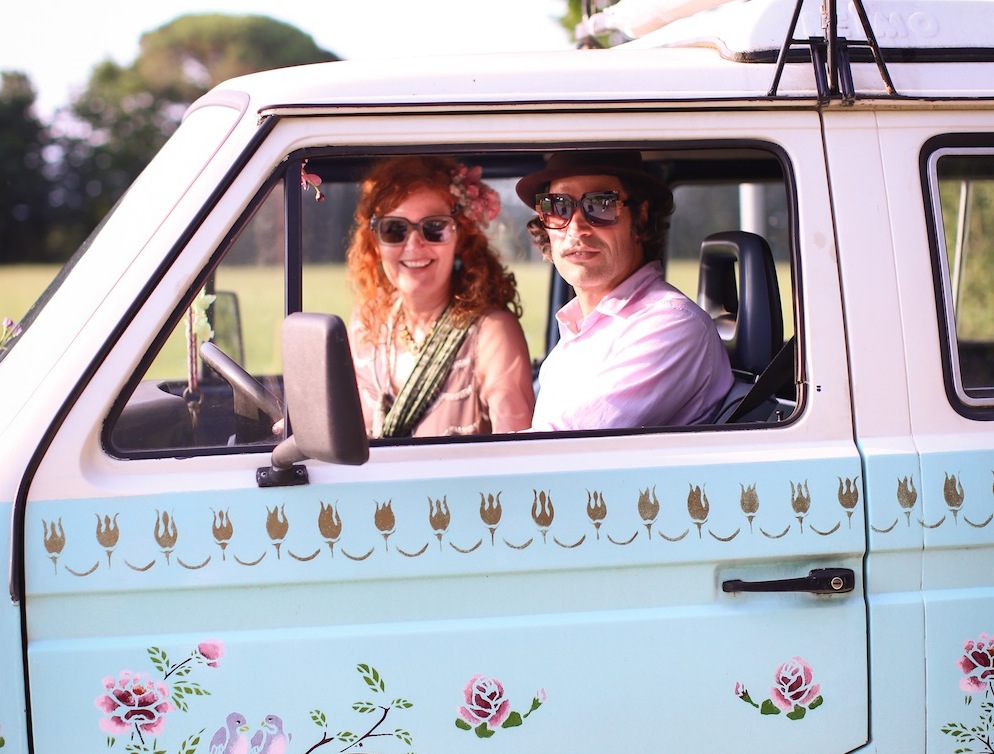
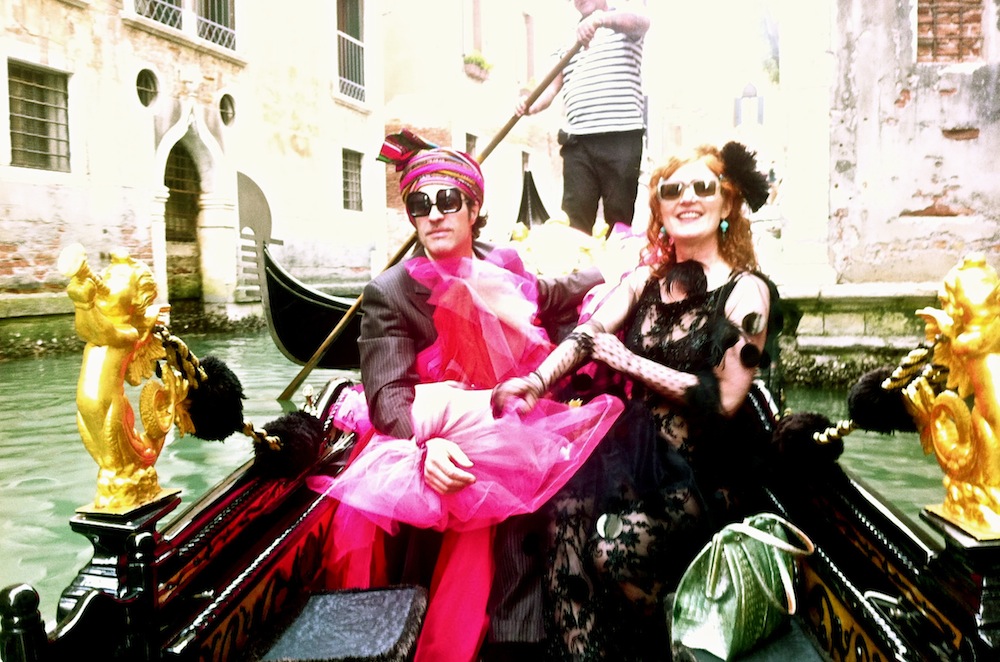
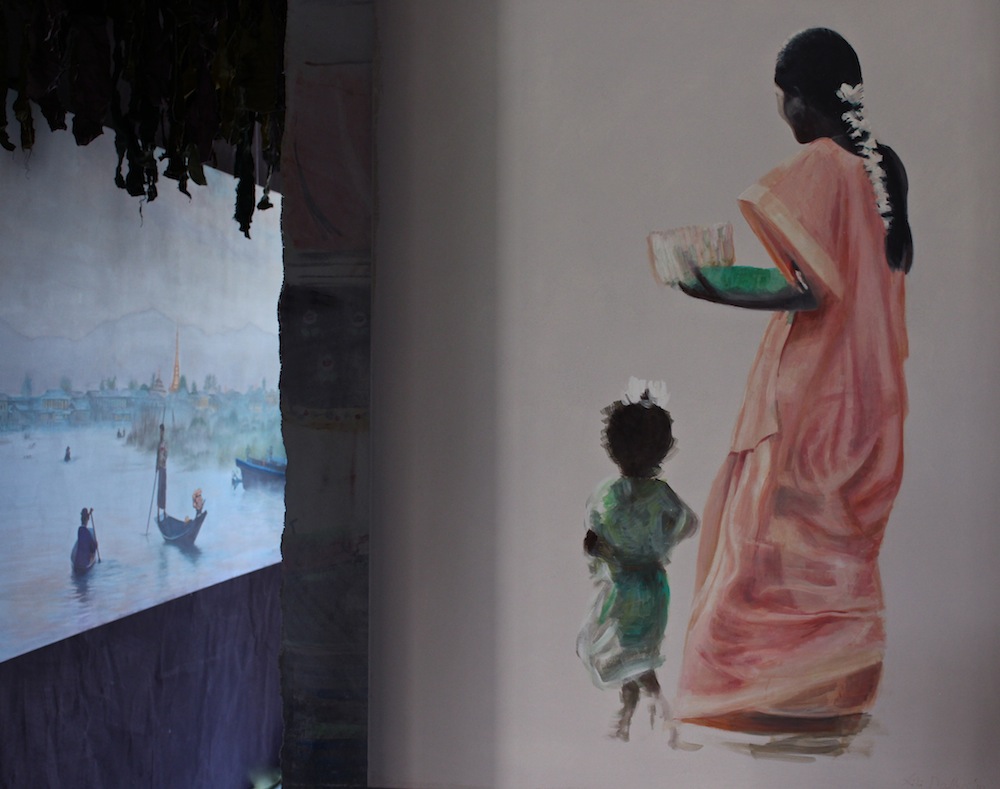
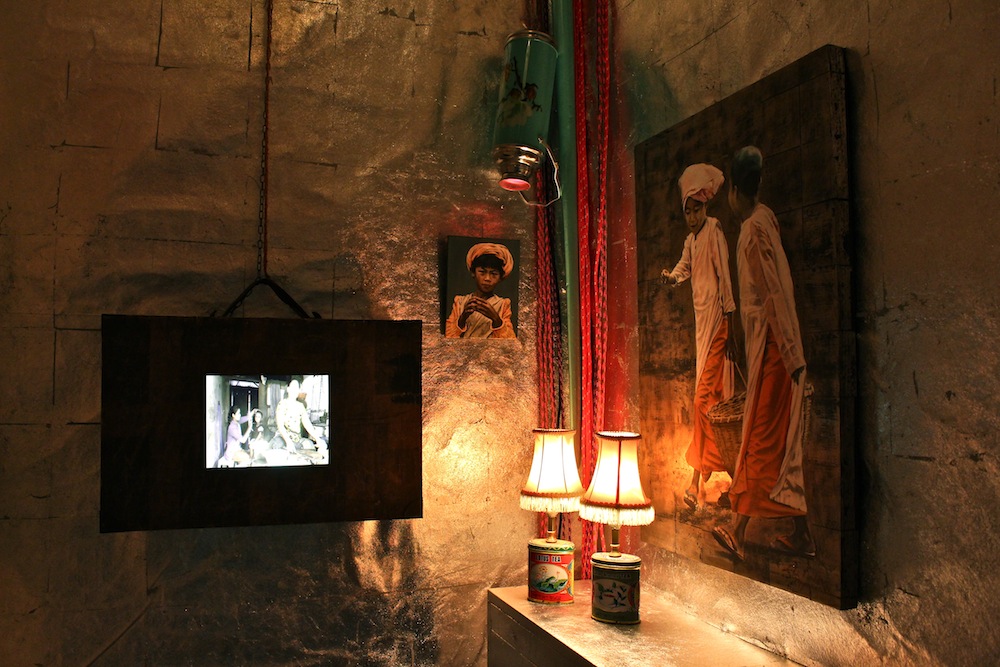
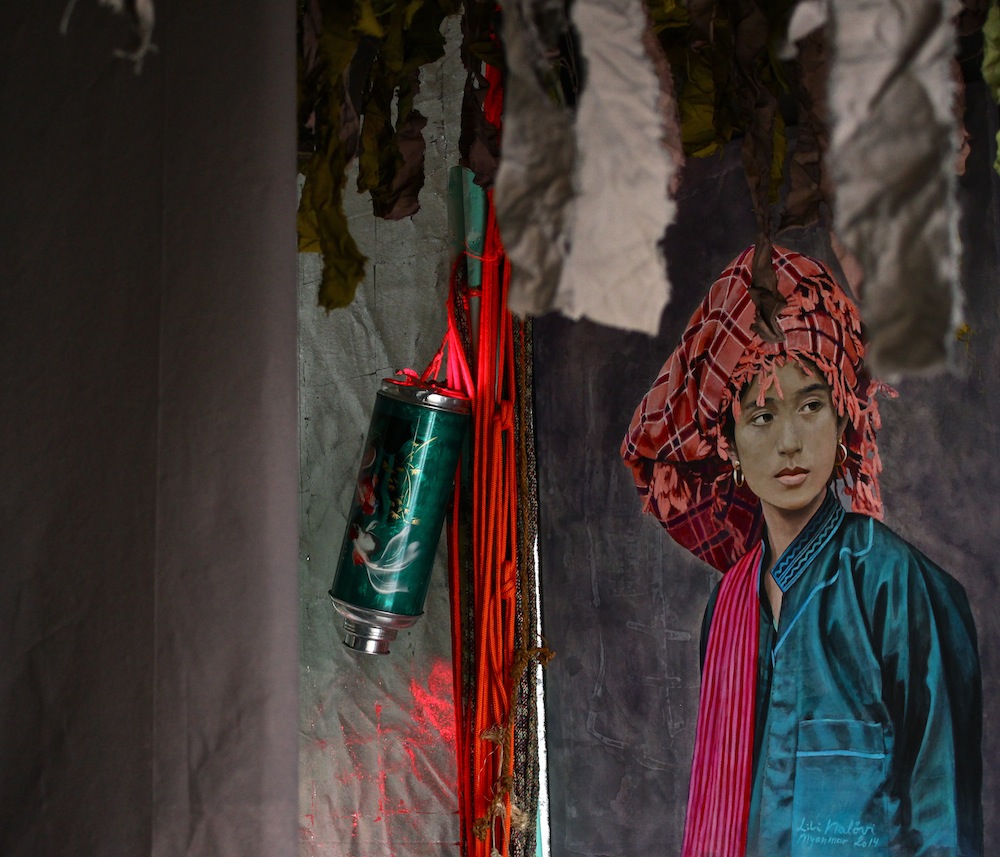
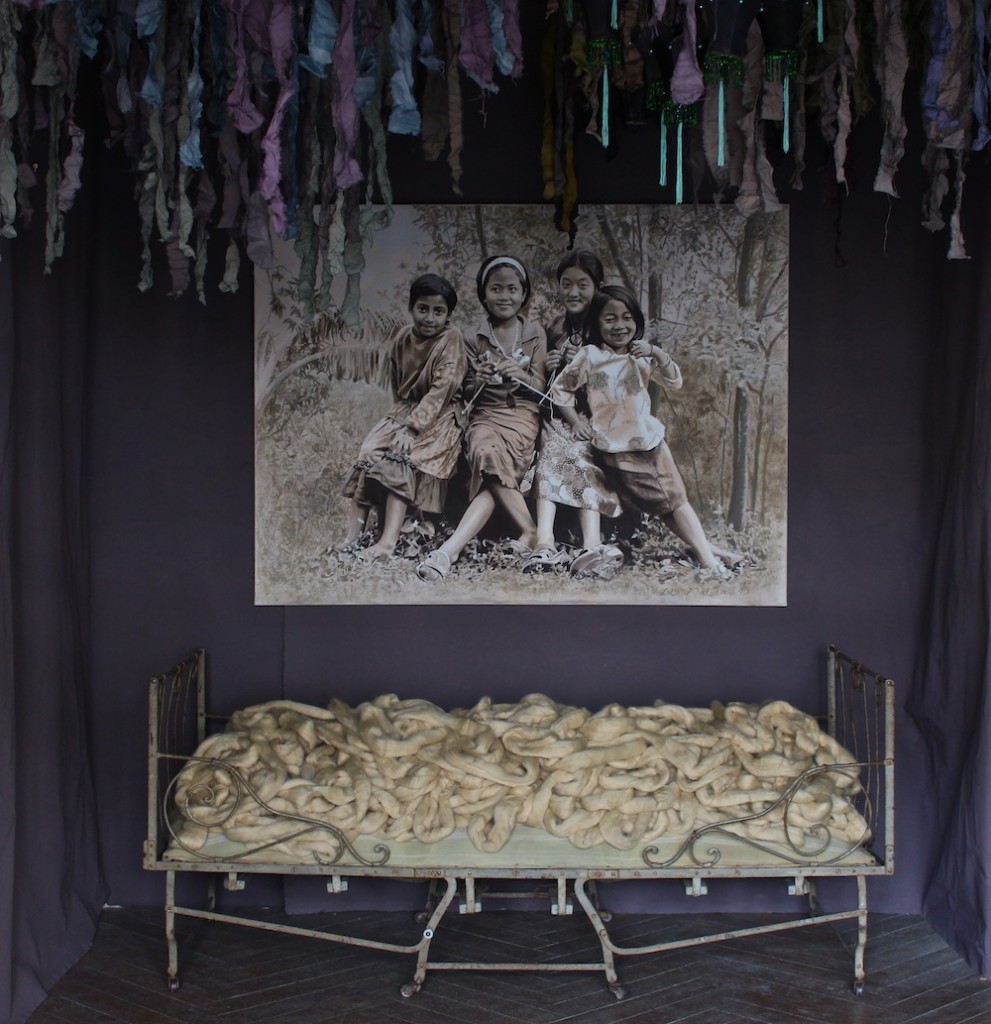
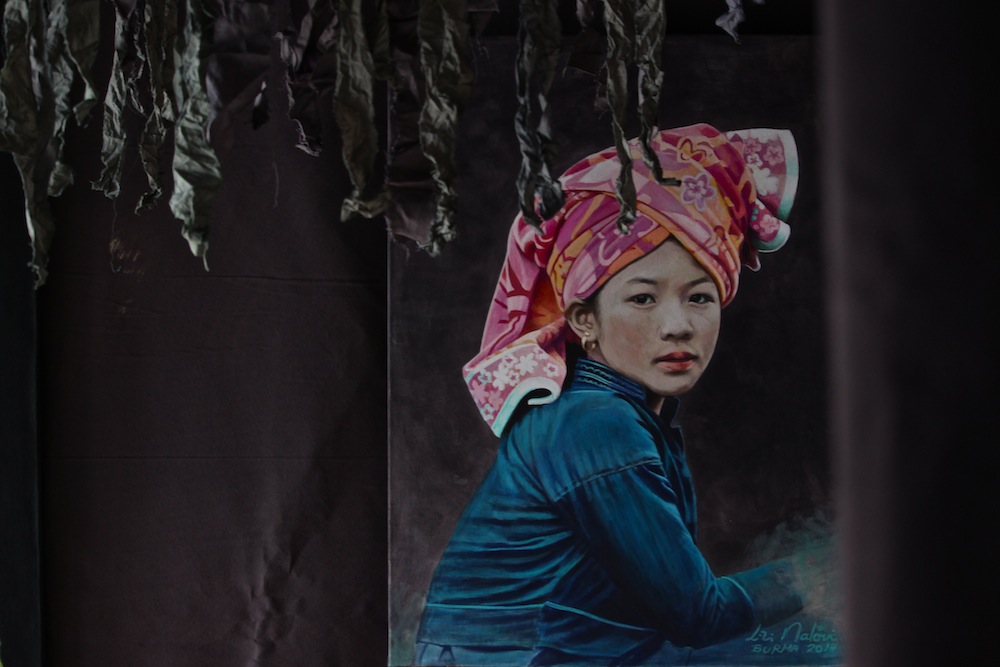
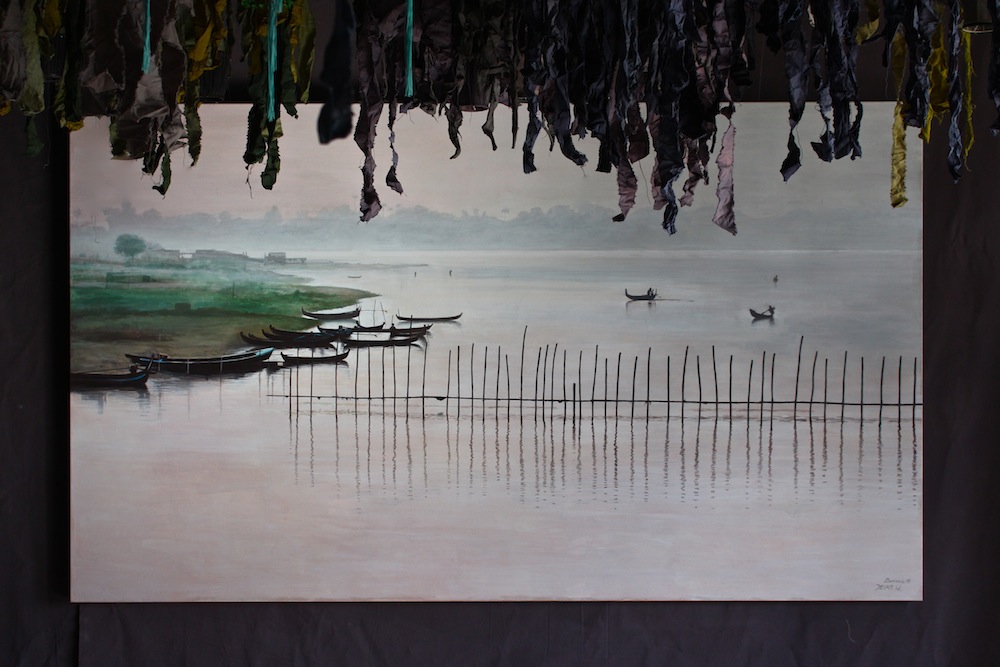
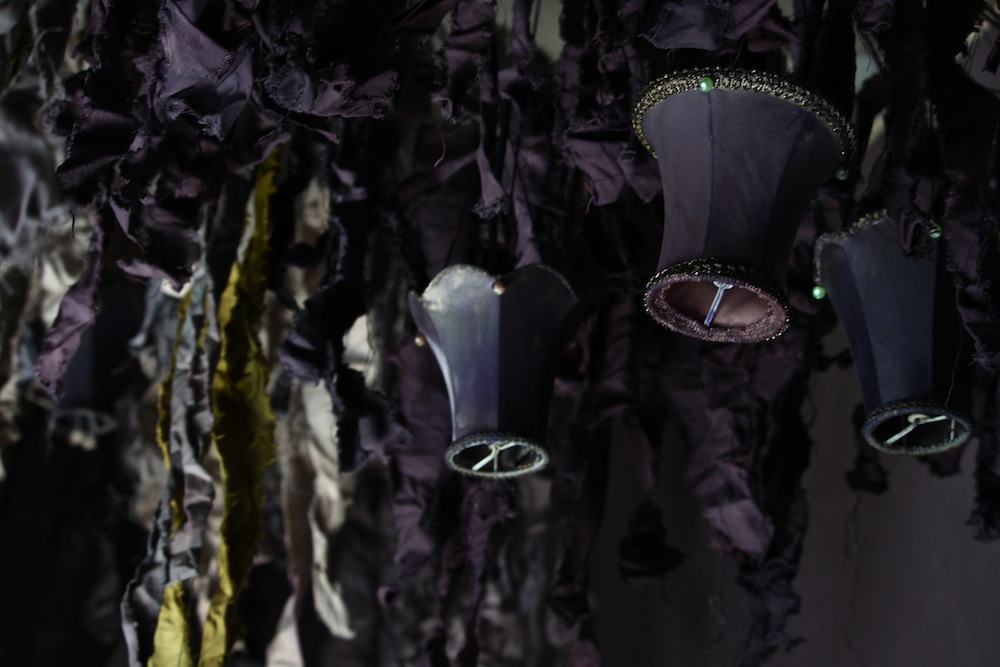
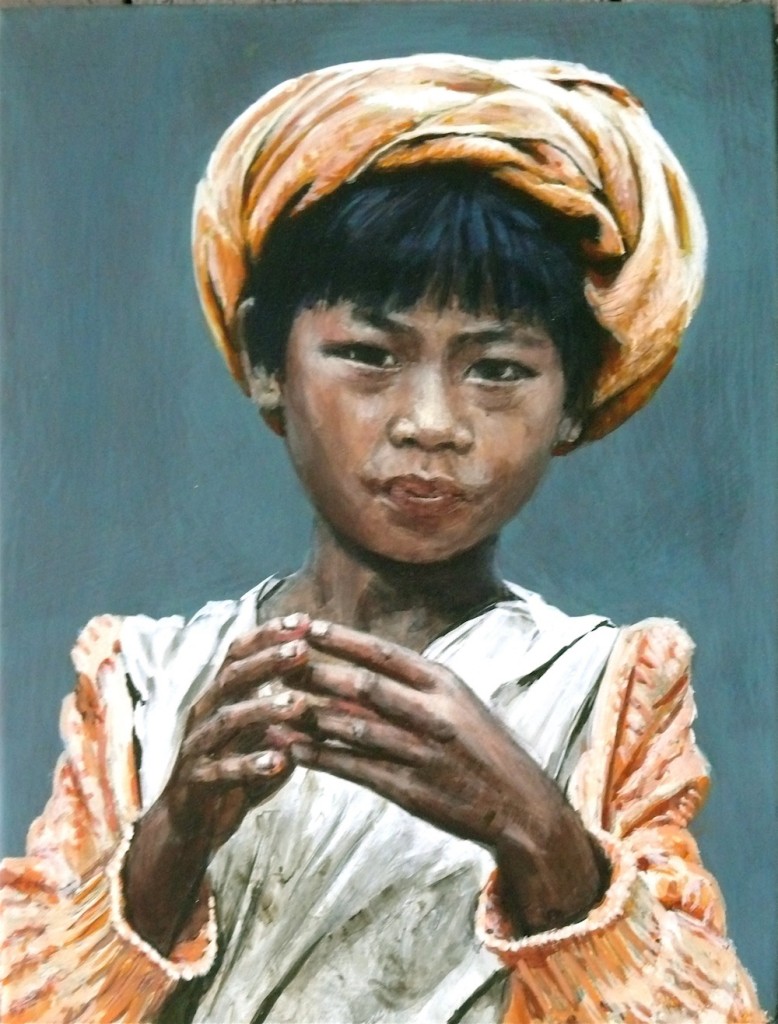
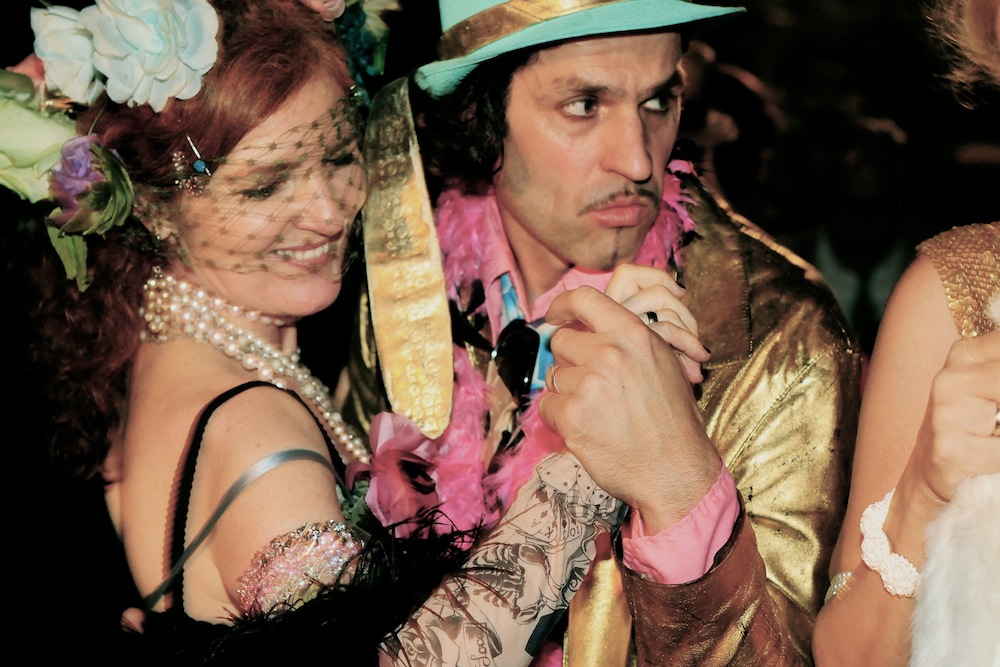
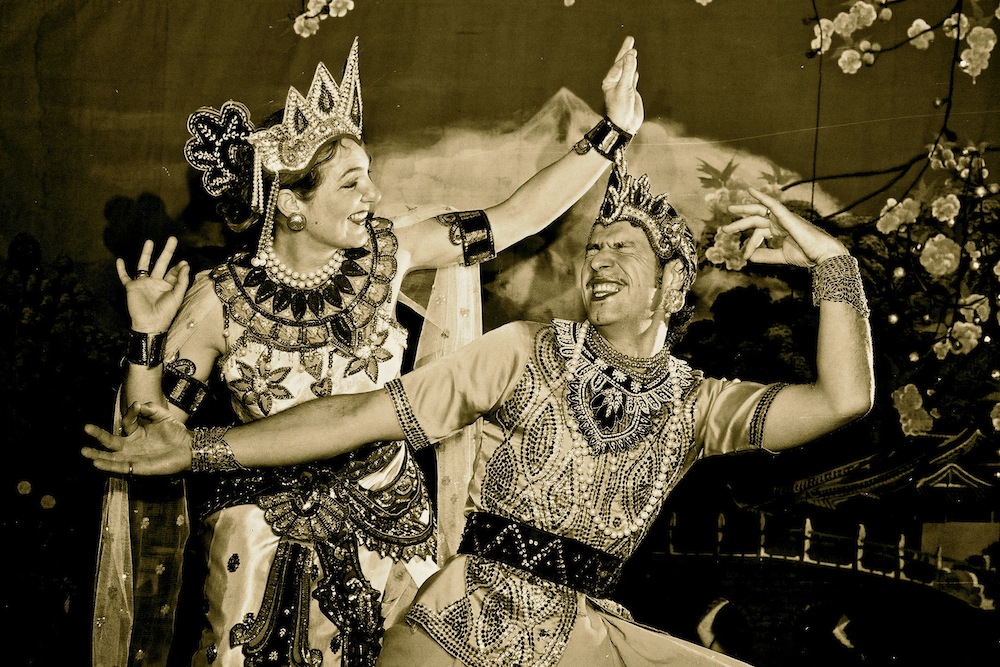
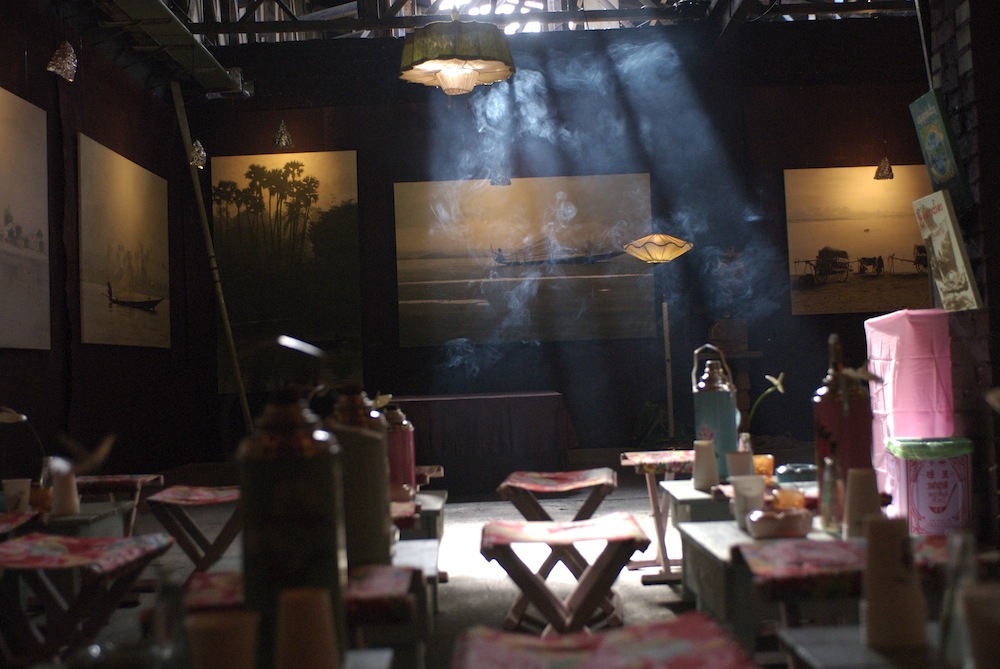
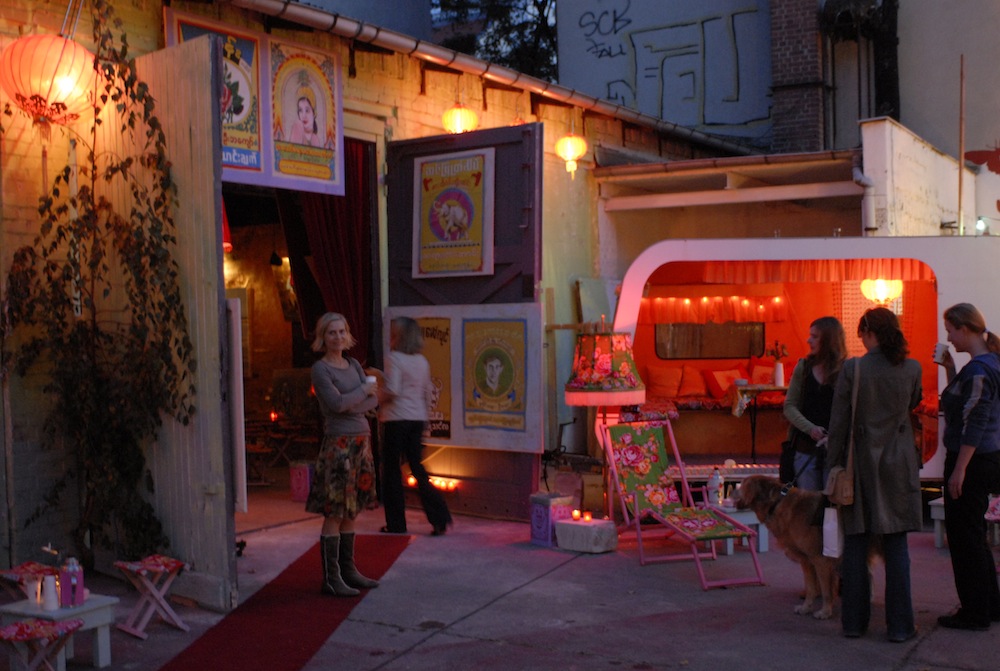
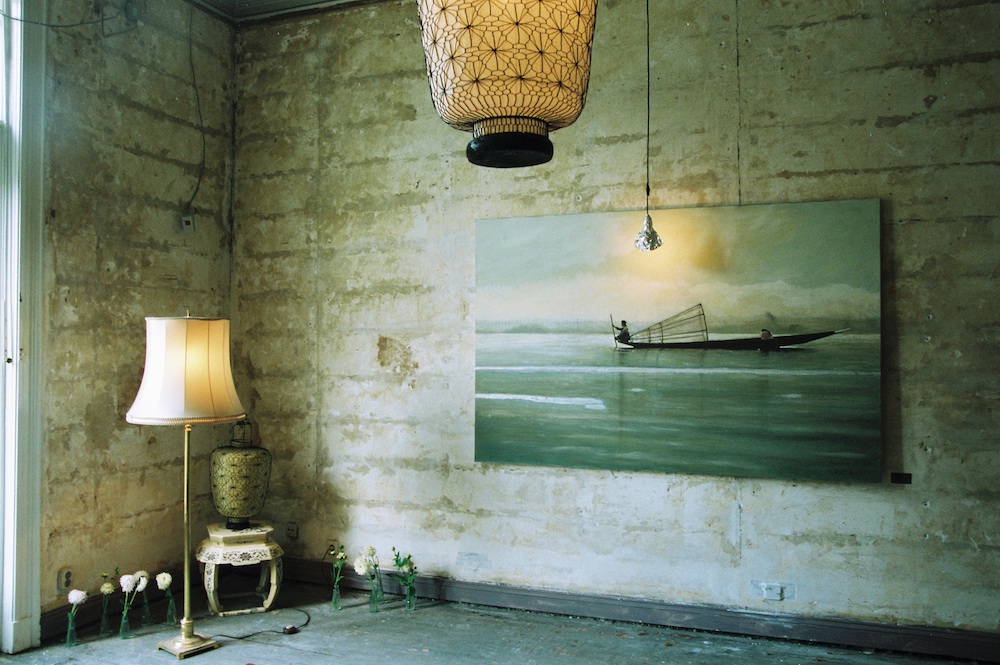
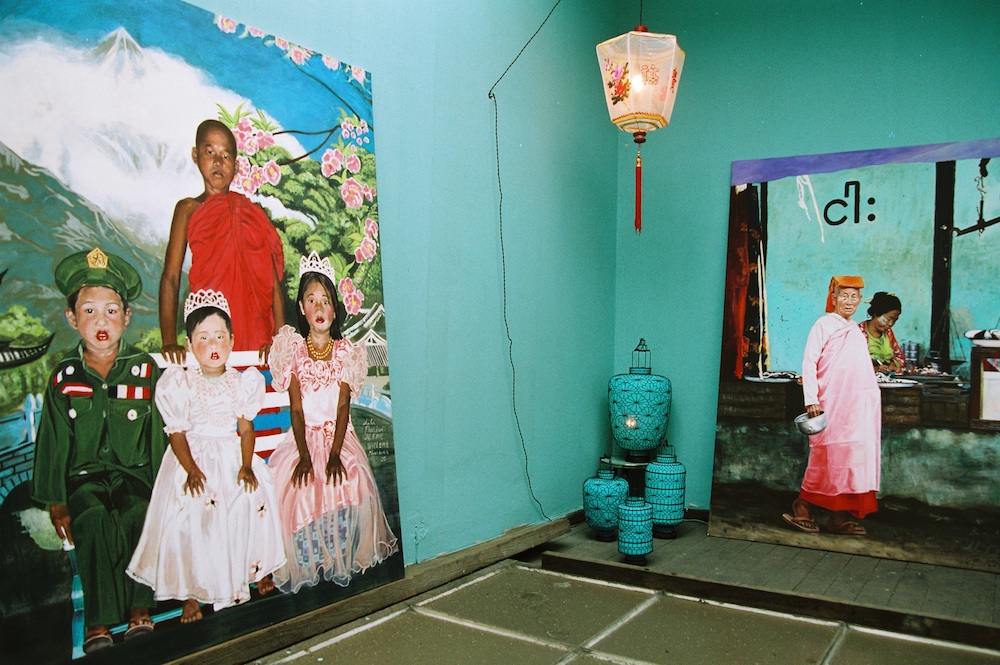


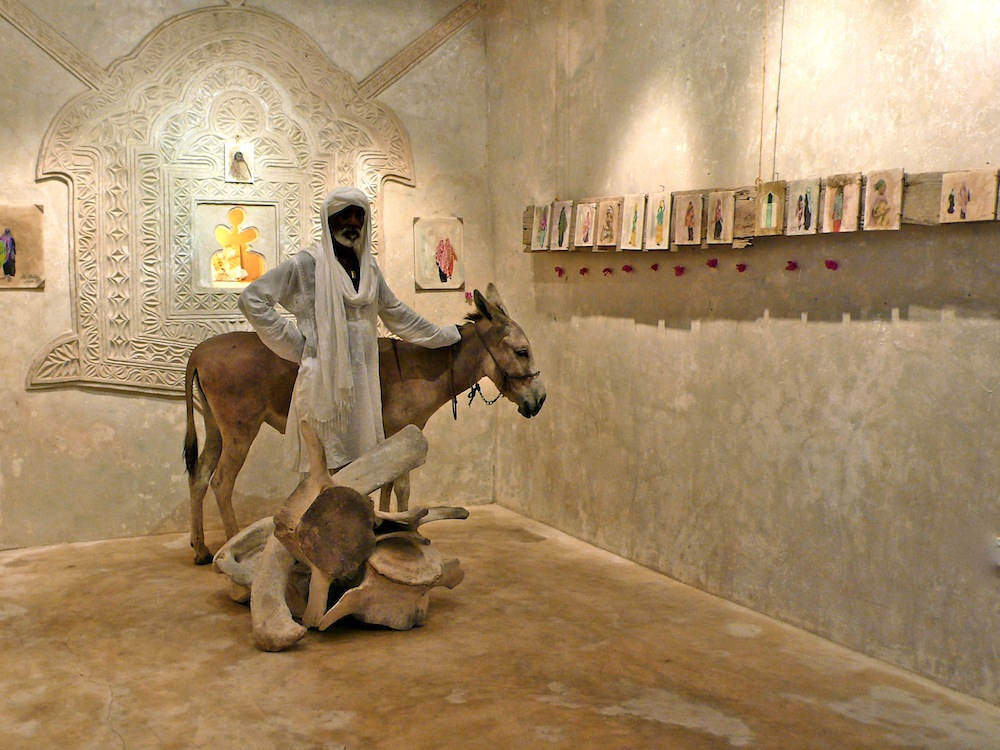
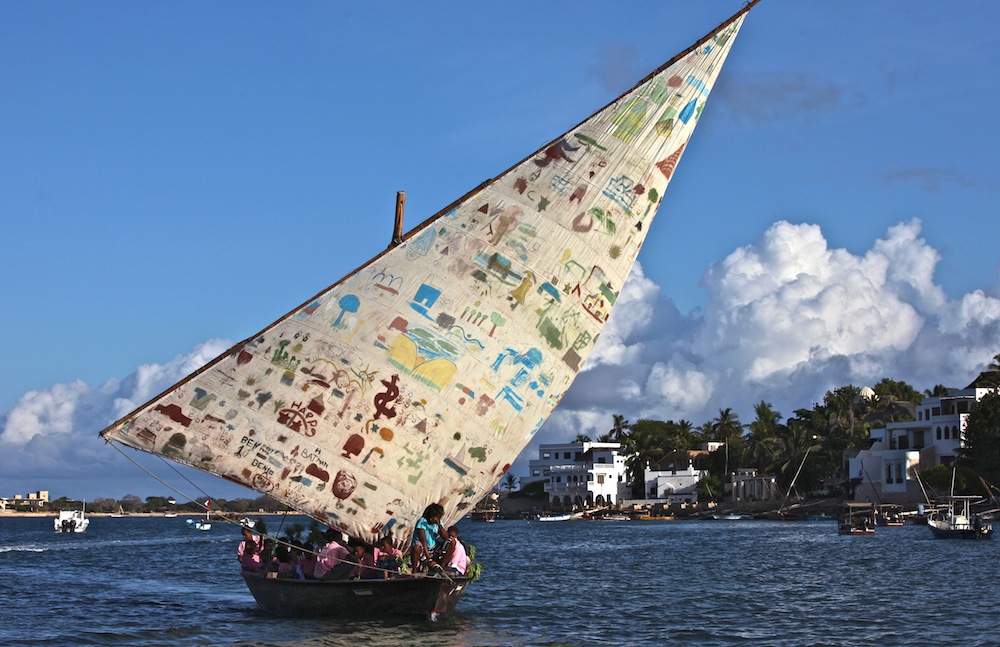

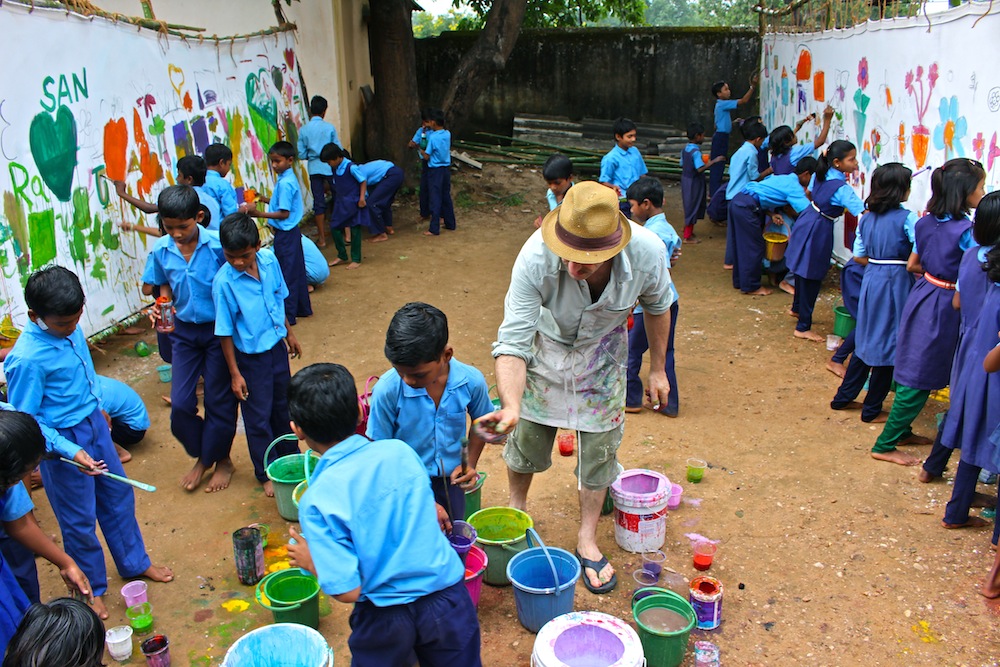
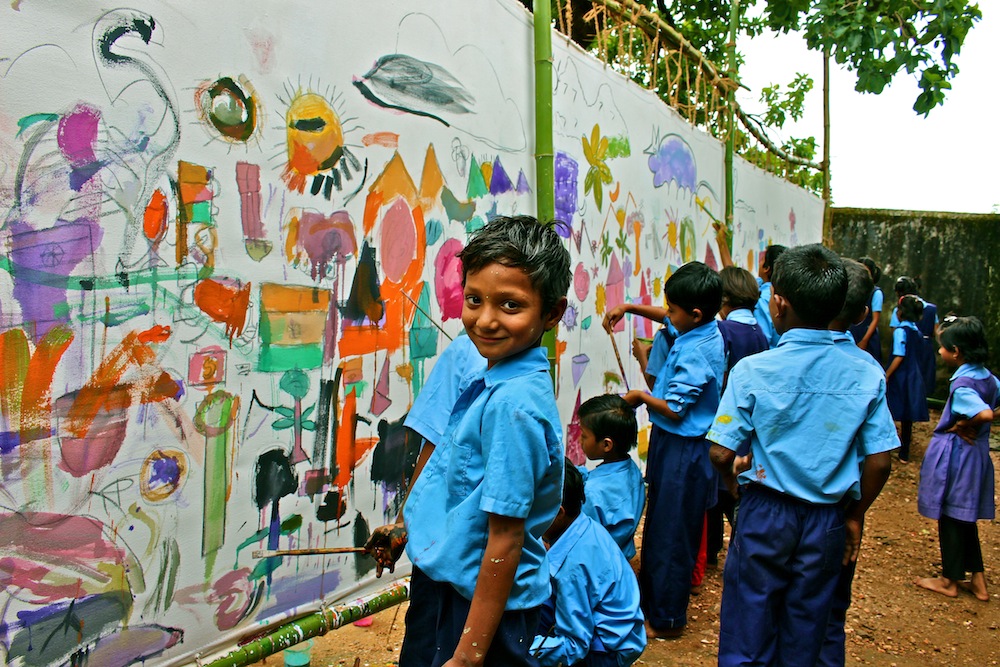
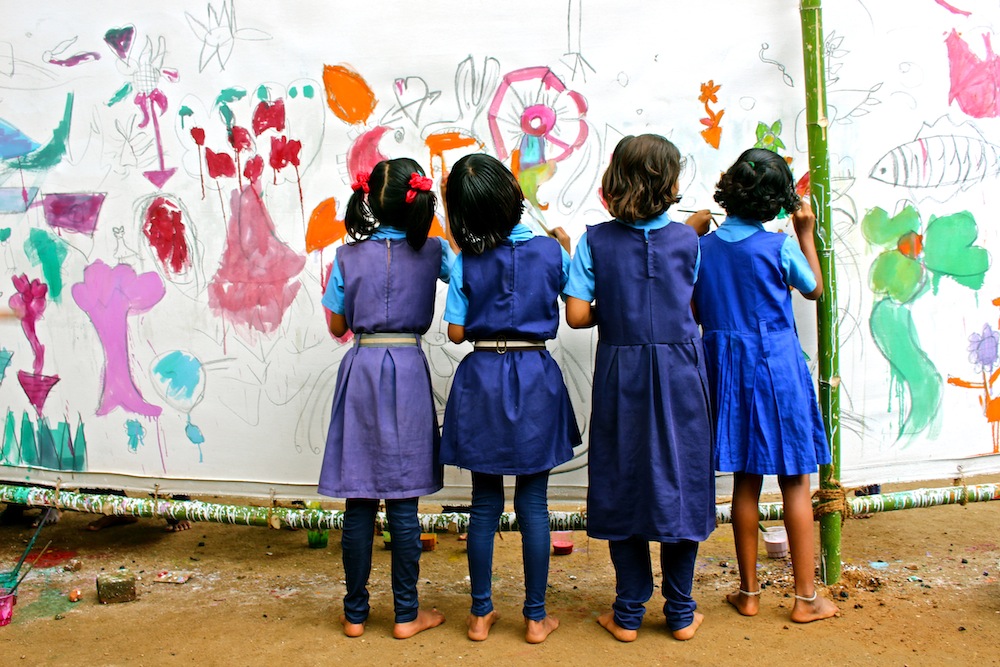
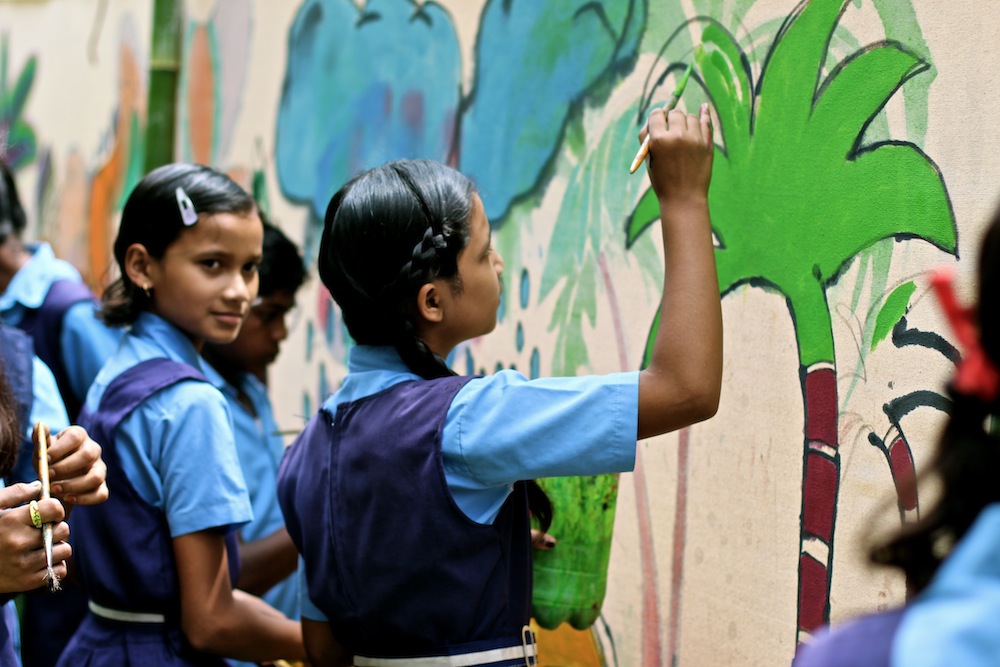
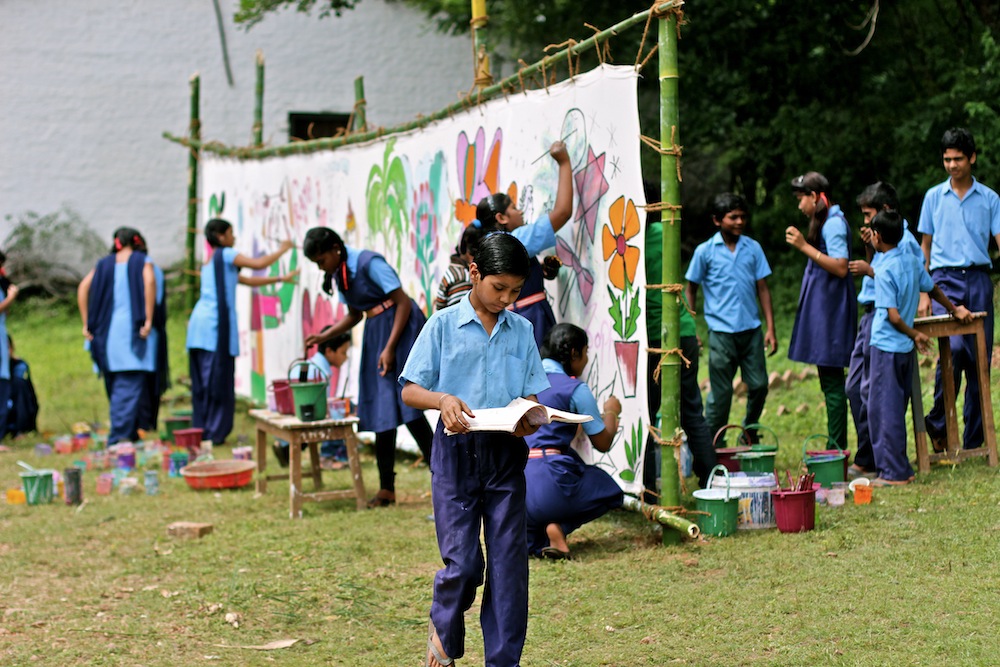
11 Responses to “Lili&Jesko, Hamburg”
Konstanze Merkel
What a great artist couple!!
Their words and activities go straight to the heart and are very moving.
Pity that there aren’t any pictures of their work.
Konstanze
admin
Dear Konstanze, if you slide (with the mouse, direction right) on the image of the interview post, you can see more than 15 images of their new creations! And, once finished to read the interview, you will find the next two appointments and their website with lots of other images!
Kim Moke
Jesko and Lili are creative, romantic and aware artists who nurture their art through an abundance of curiosity and discovery. I have the pleasure of knowing them personally. This interview depicts them very well – a very special couple who live with personal and artistic freedom. Whether it is discussing life over a cup of tea or spontaneously dancing to soul music, entering the Bel Étage Art Space will amaze and delight your senses in numerous ways.
admin
Thanks Kim. We search always for authentic stories and friends also suggest us very much hidden pearls as the art of this amazing duo!
Anne Kampermann
Beautiful!
admin
Anne, Slow Words tells always unique stories, we hope that you continue to read us!
Lili Nalovi & Jesko Willert
We are overwhelmed by all those wonderful and most touching comments we were told directly and which received via , Slow Words, email, facebook and so on…Many thanks to all of you!!!
And we would like to thank at this point again the founders of Slow Words, Diana Marrone and Paolo Graziano, for their constant efforts by publishing all these marvelous stories from people around the world, the poems, and essays!!! Please keep it up!!!
Geraldine Sharpe-Newton
I am very lucky for I know Lili & Jesko, indeed I’m going to Hamburg to see them. Their story is inspirational, their art sublime and what they create together is magical.
admin
we think the same too!
Lili Nalovi & Jesko Willert
Thank you Admin, so kind!
Lili Nalovi & Jesko Willert
Dear Geraldine, thank you so much for your wonderful comment! We are so much looking forward to celebrate your and Eti Livni’s stay at our art studio with a beautiful dinner party by the end of this week!